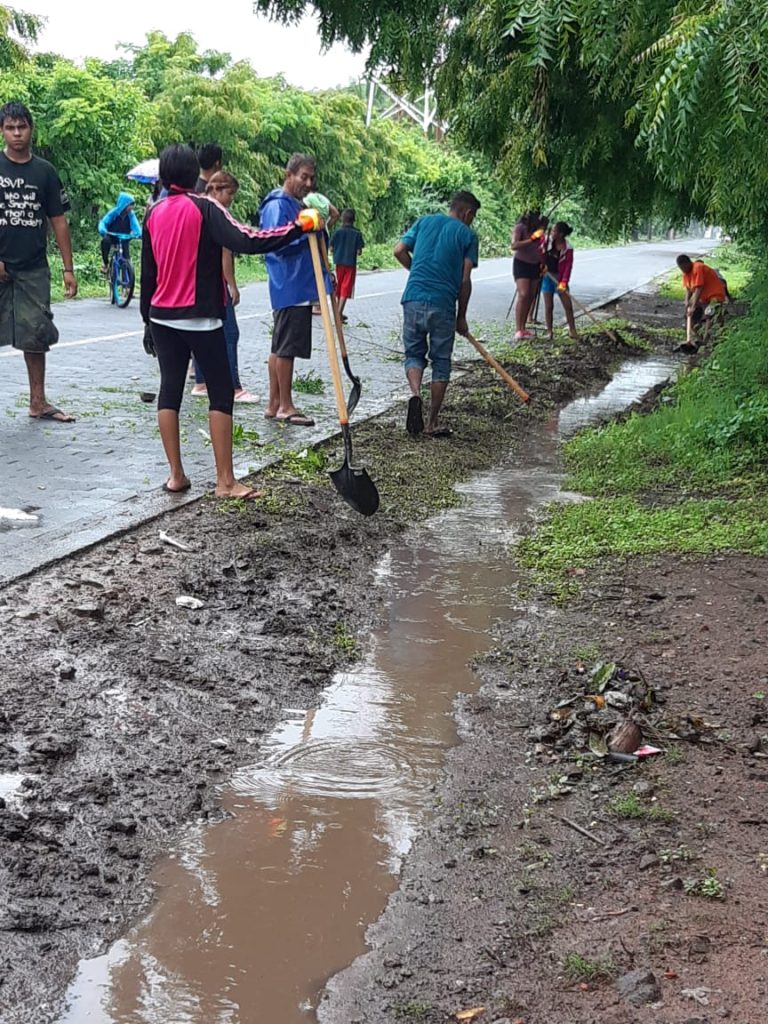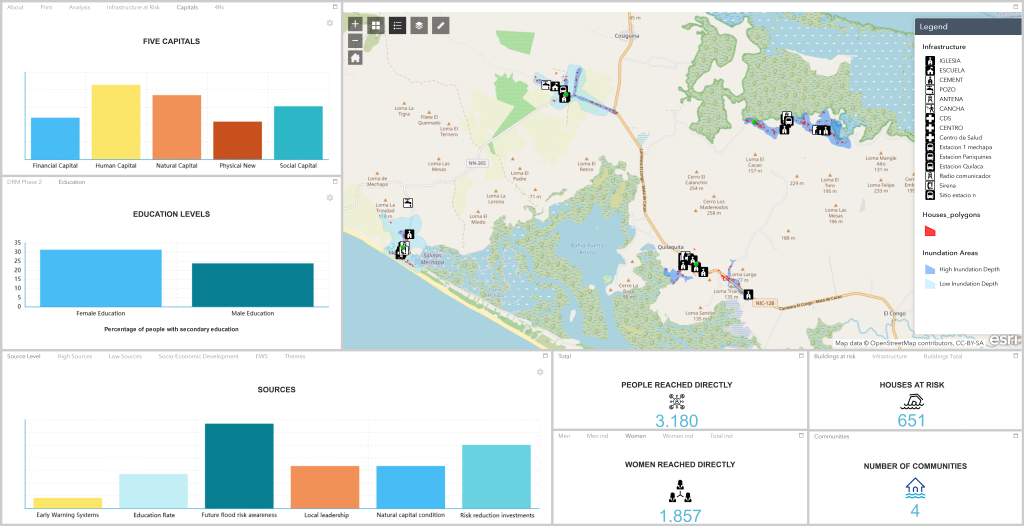IIASA researchers and colleagues from Plan International are using modern digital tools to enhance community-driven flood resilience in rural flood-prone communities in Nicaragua.
Communities in flood-prone regions around the world are increasingly being impacted by the effects of flooding. Floods affect more people globally than any other type of natural hazard and cause some of the largest economic, social, and humanitarian losses. To address this growing challenge, the Zurich Flood Resilience Alliance, a multi-sector partnership focusing on finding practical ways to help communities strengthen their resilience to floods globally, was launched in 2013. In this context, the International Institute for Applies Systems Analysis (IIASA), together with Plan International (Plan), both members the Alliance, jointly developed a community-driven flood resilience information platform for Nicaragua.
Nicaragua
According to the World Bank, Nicaragua is classified as being at the highest risk level for climate-related risks and other natural disasters. This already high level of vulnerability is increasing in magnitude and intensity due to changing weather conditions brought on by climate change. Flooding in particular, causes severe impacts on the livelihoods of people in rural and urban communities, as well as indirect damage to the production of goods and services, resulting in a decline in the country’s national economy. The most recent floods that affected the communities in which the project is implemented occurred in November 2020, caused by the hurricanes Eta and Iota. During the floods, affected communities were engulfed by streams of water, sand, earth, and fallen trees. On the slopes of Nicaragua’s many volcanoes and hillsides, colossal landslides were triggered, ruining roads and bridges and greatly impacting communities.

In Nicaragua, Plan implements resilience-enhancing activities at the community level, as community members often know best how and where they need to strengthen resilience in their communities. The organization works in four communities in the municipality of El Viejo, in the department of Chinandega. Based on information from the Disaster Risk Management unit of the municipality, Plan learned that these communities are in an area that floods regularly and that the communities have been seriously affected by floods over the past ten years. The communities are also vulnerable because of other factors such as high levels of poverty and a lack of understanding about flood resilience.
To address this issue, Plan works on building flood resilience in the communities it works with, capturing learnings and best practices in communal flood response as potential solutions towards enhanced resilience. Their aim is to influence resilience policies at the sub-national level based on the learnings generated at the community level, which is then shared with stakeholders through a range of different outputs.
Flood Resilience Dashboard
A new Flood Resilience Dashboard for Nicaragua* has been designed to put geo-spatial flood resilience data into the hands of practitioners. The objective is to provide a platform for members of the Alliance and their respective stakeholders that gives them access to both community resilience data and freely available, peer reviewed flood risk data, which can be used for decision support at scale. This data includes, among others, the Flood Resilience Measurement for Communities (FRMC) data, remote sensing derived information on flooding and other biophysical datasets (e.g., forest cover and water extent), modeled flood risk information, satellite imagery, and crowdsourced data.
The dashboard provides a visual representation of key FRMC data points and can be used to identify trends and patterns that may not be immediately apparent in the raw data. The dashboard can, for example, be used to map flood risk areas and highlight the most vulnerable households within a particular region.
The new dashboard is already being used to track water sanitation and hygiene (WASH) development efforts in the project region. It provides a comprehensive overview of the progress of the WASH initiatives, including the building and development efforts of public flood-proof latrines, as well as the number of people reached both directly and indirectly.
The latrine building and development efforts have been particularly significant in Nicaragua due to the high percentage of the population living in rural areas, where access to modern sanitation facilities is limited. The implementation of latrines in these areas has improved the health outcomes of the community, particularly for women and girls, who previously faced issues of privacy and safety. The dashboard’s ability to monitor the building and development efforts of these facilities has allowed Plan to adjust their efforts accordingly, ensuring that they are providing the necessary support to the areas that need it the most.

Applications
Plan Nicaragua is successfully using the Flood Resilience Dashboard in working sessions with local stakeholders, allowing the team to graphically show relevant information, including target beneficiaries or housing infrastructure. The dashboard makes it possible for people working in the field to visualise areas prone to flooding within the community through an interactive map and use this information to derive flood response measures.
Further details about the improved water and sanitation infrastructure were added to the dashboard, which helps to present the project to various stakeholders and community members and to identify further measures needed to increase resilience in the communities.
In the future, the dashboard could be used as a facilitation tool during conversations with local stakeholders as it is helpful to graphically show the progress made in increasing flood resilience through the interventions identified after application of the FRMC. The dashboard could continuously integrate the results of subsequent post-event studies (it is currently based on pre-event baseline study results) as this will allow Plan Nicaragua to visualize how the interventions have progressed over time.

In addition to its practical applications, the dashboard could also be a powerful advocacy tool. By providing a clear visual representation of the impacts of flooding on a community, the dashboard could help to raise awareness of the need for increased investment in flood resilience measures. This, in turn, could help to build support for policies and programs aimed at strengthening community resilience to flooding.
* As the dashboard contains sensitive data this is currently not open to the public.
Note: This article gives the views of the author, and not the position of the IIASA blog, nor of the International Institute for Applied Systems Analysis.
This article was originally published by the International Institute for Applied Systems Analysis (IIASA). You can read the original here.

Comments